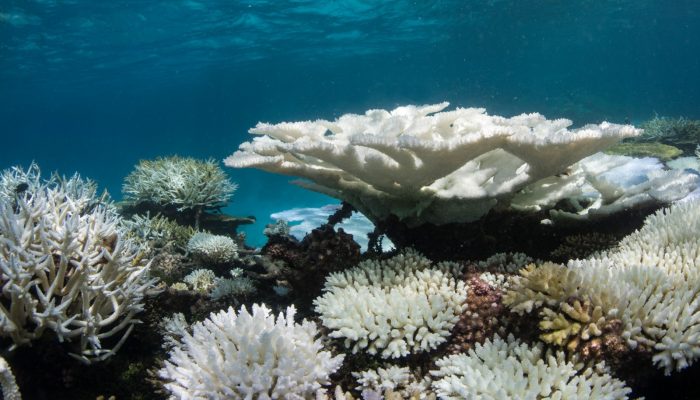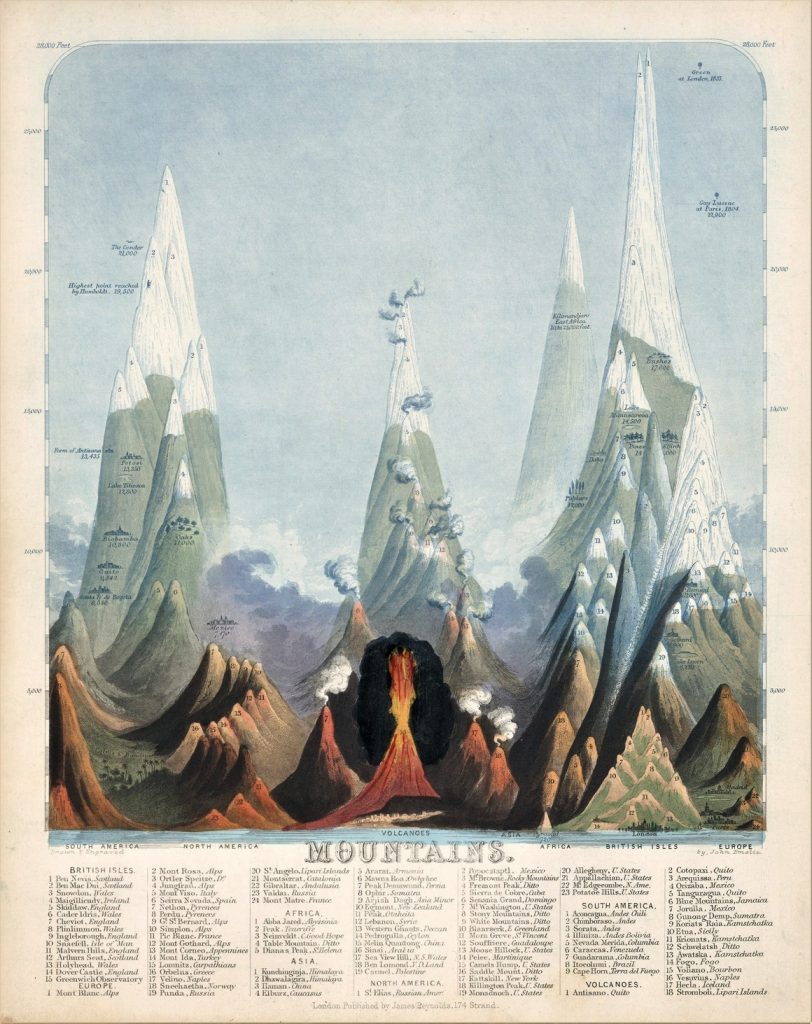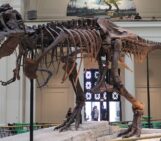
Drawing inspiration from popular stories on our social media channels, as well as unique and quirky research news, this monthly column aims to bring you the best of the Earth and planetary sciences from around the web.
Major story
While the March headlines might not have been dominated by a particular story, the state of the Earth’s climate has definitely been the overarching theme of the month.
Ahead of World Meteorological Day (celebrate on the 23rd March) the World Meteorological Organization released its annual report on the State of Global Climate. Compiled from a broad range of sources, the report reiterates the findings of the US government agencies NASA and NOAA, who earlier this year declared that 2016 was the warmest year on record.
Not only were temperatures a remarkable 1.1 °C above the pre-industrial period and 0.06 °C above the previous record set in 2015, global sea ice extent dropped more than 4 million square kilometres below average in November. Boosted by a strong El Niño event global sea levels reached record highs too.
The report comes in the wake of US President Trump’s ‘blueprint’ budget for 2018, where he sets out his spending priorities for the year ahead. Nature put together a piece that highlights what US science would stand to lose if the budget is approved. NASA would experience a 0.8% cut from current levels, largely focused on Earth science missions, and future NOAA satellite programmes are also under threat. Worst hit by the cuts would be the Environment Protection Agency (EPA), with a proposed 31% cut in funding, which would “gut EPA programs tackling climate change and pollution”, according to The Guardian.
But the signals are clear: after the record warming in 2016, temperatures have continued to rise in 2017, affecting ecosystems around the world. An example are the corals of the Great Barrier Reef, which have suffered from widespread bleaching – a situation where they expel their symbiotic algae, meaning they turn white and can die – for the third consecutive year. A new study on mass bleaching of corals was discouraging news: the only long-term solution to the problem is halting global warming. Improving water quality or enforcing fishing controls provides little relief.
But it’s not all bad news when it comes to the global climate and the Earth’s environment. Despite being a record-breaking year in terms of temperatures, 2016 was also the year that saw a dramatic drop in the amount of new coal fueled power plants being built. With cities worldwide battling poor air quality and pollution, this is certainly encouraging news.
What you might have missed
Earlier this month a BBC News crew experienced the fickle nature of volcanoes first hand. The team were visiting Mt. Etna (Sicily) to film a report on volcano monitoring, and arrived on the Italian island to discover Europe’s most active volcano had just started to erupt again.
Etna’s slow-moving lava is not usually considered dangerous. “But about 20 minutes after arriving, a burst of white steam emerged from the lava – it didn’t make much of a noise or look especially threatening – but the guides started asking people to move. Then, moments later, there was an explosion,” writes Rebecca Morelle, one of the reporters on the team. As they ran down the mountain to safety, the team and tourists, were “pelted with deadly, hot debris.” Read the full account of their ordeal and watch a spectacular video here.
It has also been a big month for palaeontology. Up until now the shape of a dinosaur’s hip determined were along the dinosaur family tree it was placed. Lizard-hipped dinosaurs fell into one group (Saurischia), while those with a more bird-like hip configuration are known as Ornithischia. Now, a team of researchers have proposed a radically new classification system. They found that 21 other anatomical features divide the dinosaurs differently. The new tree puts theropods together with Ornithischian, indicating they probably share a common ancestor. The new theory might face an uphill struggle to debunk the long-lasting consensus on the history of dinosaurs, but many in the field agree that given the thoroughness of the study it is certainly an idea worth considering.
Scientists from the Museum and Cambridge University have proposed radical changes to the dinosaur family tree. Credit: Natural History Museum.
And while we are on the subject of dinosaurs, this brilliant interactive map of every fossil found on Earth (created by @PaleoDB) is a great resource!
Way out in space, the bounty of insights from the Rosetta mission continues. From September 2014, the mission scientists have kept a watchful eye on a 70 m-long, 1 m-wide fracture on the prominent cliff-edge subsequently named Aswan, in the Seth region of the comet, on its large lobe. A few days later, new images of the area revealed that the crack had disappeared and been replaced by a new cliff face, at the bottom of which were many new meter-sized boulders. The discovery allowed the scientists to make the link between the newly created cliff face and outbursts of dust and gas.
You might think the use of infographics to visualise data is a relatively new thing, but you’d be mistaken. This collection of 1800s educational diagrams, of scientific discoveries, from the moon’s surface to the longest rivers, is simply stunning and incredibly effective.

Emslie and Reynolds compare mountains and volcanoes, including mountains in the Alps and Andes. Featured in Geological Diagrams. Courtesy David Rumsey Historical Map Collection
Links we liked
- Something for the weekend? Why not try your hand at baking a scientifically accurate (sort of!) cake planet?
- New research suggests that by the middle of the century, more than half of humanity will live in water-stressed areas. Badly managed resources play a crucial role in water shortages globally
- For a lighthearted, yet very informative, take on mass extinctions this story in The Atlantic is not to be missed
- A German coal-mine, which has provided power for the country’s industry sector for the past half century, will get a new lease on life when it’s turned into a into a pumped-hydro-storage station, acting like a giant battery that stores solar and wind energy
The EGU story
This time of year, EGU’s biggest story is our annual General Assembly, starting only a few weeks from now. This month, we published the meeting programme, which includes some 1000 sessions and over 17,500 abstracts! On the blog, we published guides on how-to make the best of your oral, poster or PICO presentation at the General Assembly, revealed the finalists of the Communicate Your Science Video Competition, and provided tips on making the most of your time in Vienna without breaking the bank. We look forward to seeing you all in the Austrian capital in the last week of April!
And don’t forget! To stay abreast of all the EGU’s events and activities, from highlighting papers published in our open access journals to providing news relating to EGU’s scientific divisions and meetings, including the General Assembly, subscribe to receive our monthly newsletter.


